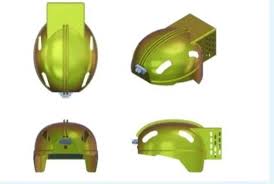A multidisciplinary team at Qatar University has pioneered the Smart Hat, a lightweight, wearable assistive device designed to empower individuals with visual impairments. Leveraging state-of-the-art artificial intelligence (AI), computer vision, and sensor integration, the Smart Hat provides real-time navigational cues and object recognition. This article outlines the system’s design, technologies, key functionalities, and the broader implications for transforming independent mobility.
In response to the pressing need for enhanced autonomy among visually impaired individuals, researchers at Qatar University have developed a revolutionary assistive device known as the Smart Hat. This system aims to simplify navigation in diverse environments and reduce dependency on caregivers. The project is spearheaded by distinguished computer engineering professor Sumaya al-Maadeed—an authority in computer vision and AI—and is supported by team members including PhD candidate Jayakanth Kunhoth, Dr. Mohammed Zied Chaari, and MSc student Nandhini Subhramanian
System Architecture and Design
Device Form Factor
The Smart Hat is conceived as a wearable, lightweight device that integrates seamlessly into the user’s everyday life. Its ergonomic design ensures comfort without compromising on its technological robustness, making it an unobtrusive yet powerful tool for those with visual impairments.
Integrated Technologies
The device fuses several advanced technologies into one cohesive system:
- Artificial Intelligence & Deep Learning: The system employs deep learning models trained on expansive datasets of images and environmental scenarios. This enables accurate object detection and adaptive decision-making in real time.
- Computer Vision: Advanced algorithms continuously scan and interpret the surroundings, allowing for immediate identification and labeling of objects.
- Sensor-Based Systems: A suite of sensors provides precise spatial data, ensuring effective navigation even in complex or crowded spaces.
- Natural Language Processing (NLP): With support for both Arabic and English, the Smart Hat communicates with users in a natural, conversational tone, thereby reducing any technological intimidation and enhancing ease of use.
This hybrid approach not only underpins the device’s sophistication but also ensures robust performance under varying lighting conditions and dynamic environments.
Key Features and Functionalities
Real-Time Environmental Mapping
One of the system’s primary capabilities is object detection and recognition. By harnessing computer vision, the Smart Hat continuously maps the user’s environment, identifying objects and potential hazards in real time. This visual data is then converted into actionable audio feedback, enabling users to maintain situational awareness without relying on sight.
Audio-Based Navigational Assistance
The Smart Hat offers step-by-step audio instructions that help users navigate safely. The system’s deep learning components analyze both the user’s behavior and environmental characteristics to tailor guidance that is both accurate and contextually relevant. Whether avoiding obstacles or maneuvering through crowded areas, the device delivers timely alerts for enhanced safety and independence.
Adaptive Learning and Personalization
The AI component is designed to learn from continuous user interactions. With each encounter, the system refines its responses, adapting to individual preferences and specific navigational challenges. This personalized assistance evolves over time, ensuring that the device remains effective as user needs change.
Technological Methodologies
Training and Data Integration
The robust performance of the Smart Hat is underpinned by extensive training on diverse datasets—including images, object libraries, and various environmental conditions. This comprehensive data ingestion ensures that the deep learning models can reliably operate in scenarios ranging from low-light conditions to busy urban environments.
Bilingual Communication
The incorporation of sophisticated NLP technology in both Arabic and English expands the device’s accessibility. By providing instructions and object descriptions in a conversational manner, the Smart Hat bridges the communication gap, making advanced technology approachable for users from varied linguistic backgrounds.
Broader Impact and Future Directions
Enhancing Independence and Social Participation
By transforming environmental data into intelligible, real-time guidance, the Smart Hat has the potential to significantly enhance the independence of visually impaired individuals. With increased self-reliance in navigation and daily tasks, users can engage more fully in social, professional, and recreational activities 2.
Patent Recognition and Collaborative Expansion
Building upon promising initial outcomes, the research team has filed patents to secure the intellectual property surrounding the Smart Hat’s innovative approach. This proactive move reinforces the device’s credibility and establishes a foundation for future technological advancements. Plans are already underway to extend research into additional functionalities and to forge international collaborations that will drive further development in assistive technologies.
Conclusion
The development of the Smart Hat at Qatar University marks a significant stride in the application of AI and wearable technologies for assistive purposes. By integrating advanced computing techniques with a clear user-focused design, the device not only improves the lives of people with visual impairments but also sets a new benchmark in the field of assistive technology. As the research team looks ahead to incorporating further enhancements and building global partnerships, the Smart Hat represents both an innovative technological achievement and a transformative step toward broader societal inclusion.
For more information, please contact Prof. Somaya Al-Maadeed, Professor of Computer Science and Engineering at Qatar University.









